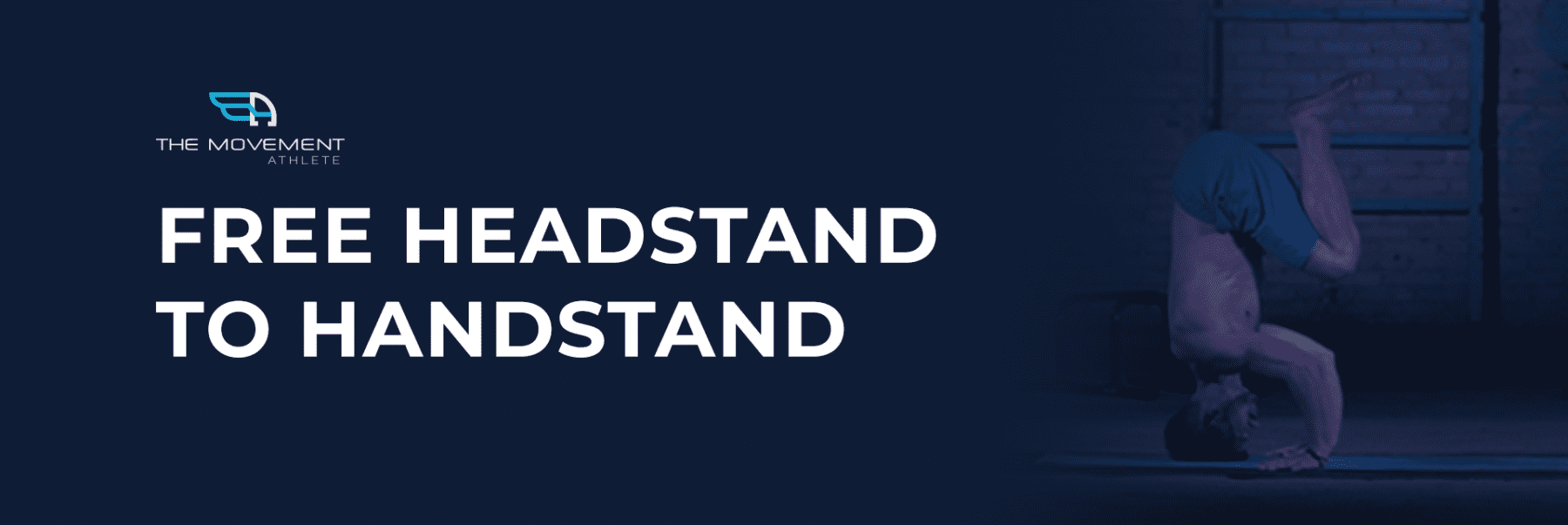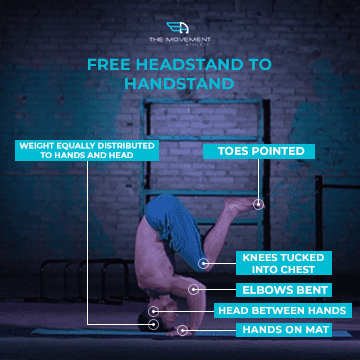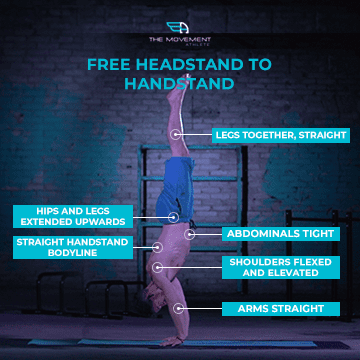
Join the tribe of Movement & Calisthenics Athletes – people just like you that are working with their own body weight to get strength, lose fat build muscle, recover from injuries and live their best lives!
Body coordinations is best improved through movements with a transition. Free headstand to handstand requires good amount of strength as well as body control. It’s an intermediate skill that will build you upper body strength and ultimately body coordination. Plus, it’s just a very cool move to learn.
From a tuck headstand position, you have to push your hips and feet straight up. The generated momentum will help you move upwards so you can transition to handstand without requiring you more effort to push using your arms. After that, you’ll slowly lower your body to a headstand position again using your arms so you’ll also develop strength in its negative portion. But you’ll have to tuck again your legs to your chest when doing the negative. This allows you to lessen the load on your shoulders, too.
This is a dynamic skill that requires you more coordination than strength since you’ll be using momentum to transition to the next position. Be safe in your attempts!
The most difficult part here would be overcoming the fear of suddenly moving upwards. Once you get over that and if you have a good headstand, handstand, you’ll easily learn this skill in no time!
HOW TO KNOW WHEN IT’S SAFE TO ATTEMPT?
Free headstand to handstand is quite a complex skill that requires excellent body control and technique. Below are the following moves required before attempting the skill:
Freestanding headstand
Freestanding Handstand
Handstand pushup negatives
Summarized Benefits
- Shoulder and core strength
- Body coordination
- Enhance handstand balance
- Learn control of momentum
- Overcome fear of inverted transitions
How to Perform
- Start arm width away from the wall or where you feel most comfortable kicking up to handstand.
- Place hands on the ground with mat located at head position
- Elbows bent place the top of your head on the floor with legs tucked to chest
- Press into the ground and push up. At the same time, push hips upward and kick legs upwards from your tuck into handstand
- Hold a handstand
- Slowly descend by bending your elbows and tucking back your legs and maintaining full-body tension as you lower your head towards the ground/mat
- Place head-on ground/mat and putting weight evenly distributed on head and hands
- Return to start position and repeat.
Keep in mind
The key to understanding the kick is that it’s not actually a kick. The motion that will push you upwards comes from a push of your hips upwards. The kick just follows. Think as if you’re sitting on a chair then you’ll suddenly stand up with power from your hips. It’s the same motion in this skill, but you’re inverted.
Play with the amount of force you’ll exert so you can transition to your handstand without having to use much of pushing strength to get up. Just practice and practice until you can constantly use the exact force needed for the skill.
Lowering down to the finishing position could also be scary at first. Be sure you have enough shoulder strength to complete the movement and use a good matting so you’ll comfortable to fall at first.
Don’t be scared to fall during your first tries. Learn how to exit wrong entries to handstand.
There’s a lot of things going on during the motions of the movement. Timing is very important to learn the move. As soon as you extend your lower body, push up to your handstand quickly. As soon as you lower your body to headstand, tuck your legs immediately. These motions of the legs help you control motion and let you conserve strength.
Coaching Pointers
Starting Position:
Hands on mat
Weight equally distributed to hands
and head
Elbows bent
Head between hands
Knees tucked into chest
Toes pointed
Movement Position:
Hips and legs extended upwards
Shoulders flexed and elevated
Arms straight
Abdominals tight
Legs together, straight
Straighthandstand bodyline
Finish Position:
Slow descent to headstand
Elbows bent
Head between hands
Hands aligned with knees
Knees tucked into chest
Toes pointed


